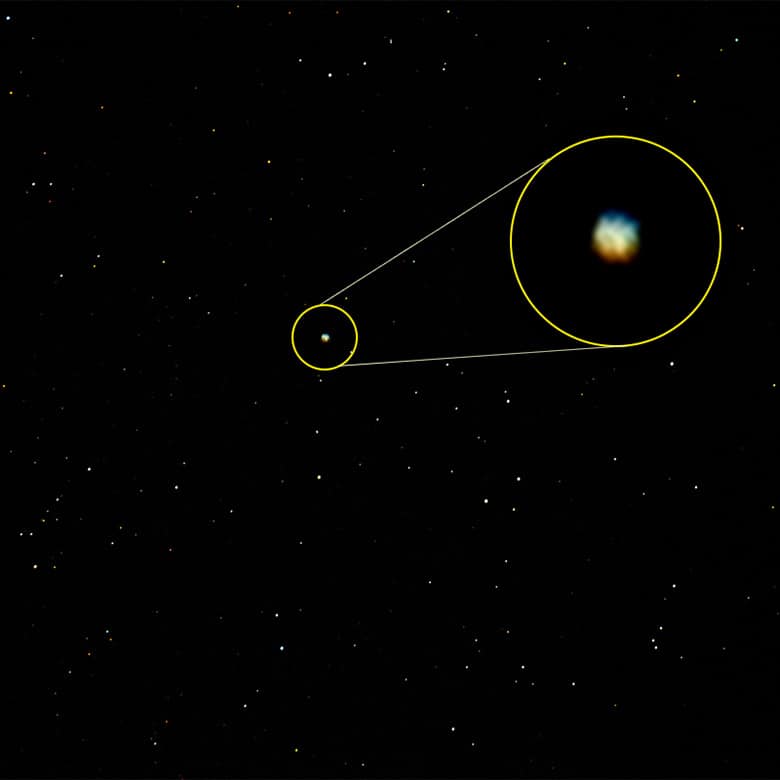Photographing an asteroid was an extra special thrill the other night. To actually look up into the night sky and be able to point to a star that is actually an asteroid is simply amazing. While the conditions were not 100% helpful for astrophotography, there was a rising full moon and some clouds rolling by, we got the shot and that’s what counts.
The 4 Vesta asteroid will be in our sky for another month or so, therefore it will be a better night photography subject when the conditions are optimal. Still and all, it was exciting to take this image below, before the clouds rolled in or the full moon turned night into day.
We use Sky Safari software to view what’s in our night sky. A friend on our facebook page mentioned that 4 Vesta would be visible, a quick look in the Sky Safari software gave us the co-ordinates and we took the shot.
You will notice that we have included a zoom feature on the photograph of the asteroid. Hope it helps a little to see that the 4 Vester asteroid does differ a little to a star.
With our limited astronomy gear we do produce some nice images, especially of planets. Wouldn’t be nice to be able to produce images of the quality that the Hubble Space Telescope gives. I can spend hours, and often do, just admiring the images on their website. I dream of bigger telescopes and a larger bank balance often.
Capture Details
- Telescope: 8″ Celestron Nexstar Evolution HD
- Mount: Celestron AZ Fork
- Camera: Canon 5DSR tethered to Mac running Canon EOS Utility software
- Camera Settings:
- Shutter Speed 30 seconds
- ISO 200
- Single image processed in Photoshop
About Asteroid 4 Vesta
The brightest asteroid in the night sky at +5.6 magnitude, 4 Vesta can be seen with the naked eye. In the southern skies, 4 Vesta can be viewed in the Ophiuchus constellation until July 27 2018. It dwells in the asteroid belt between the orbits of Mars and Jupiter and is the second largest asteroid in the main belt. The NASA Space Probe “Dawn”orbited 4 Vesta in 2011. It’s a massive 800 odd kilometers wide and covers some 800,000 sq km all up. 4 Vesta doesn’t make dwarf planet status though.
4 Vester boasts an amazing prominent feature, the massive Rheasilvia Crater, which stretches an incredible 505 km in diameter. To put the size of the crater into context, the crater formed on earth that wiped out the dinosaurs was just 15 kms wide. The Rheasilvia crater was created a little less than a billion years ago in an impact that must have been monumental. Apparently 5% of meteorites that fall to earth today were from that impact on 4 vesta.
It is amazing facts such as the history of 4 Vesta that makes astrophotography so enjoyable. You get to learn and think about the entire universe while enjoying the night sky. You also realize how minute the human race is in the grand scheme of creation.
Sign-up for our online photography course and learn how to master your digital camera in easy to understand “at your own pace” lessons.
Click here for more information and sign-up details
